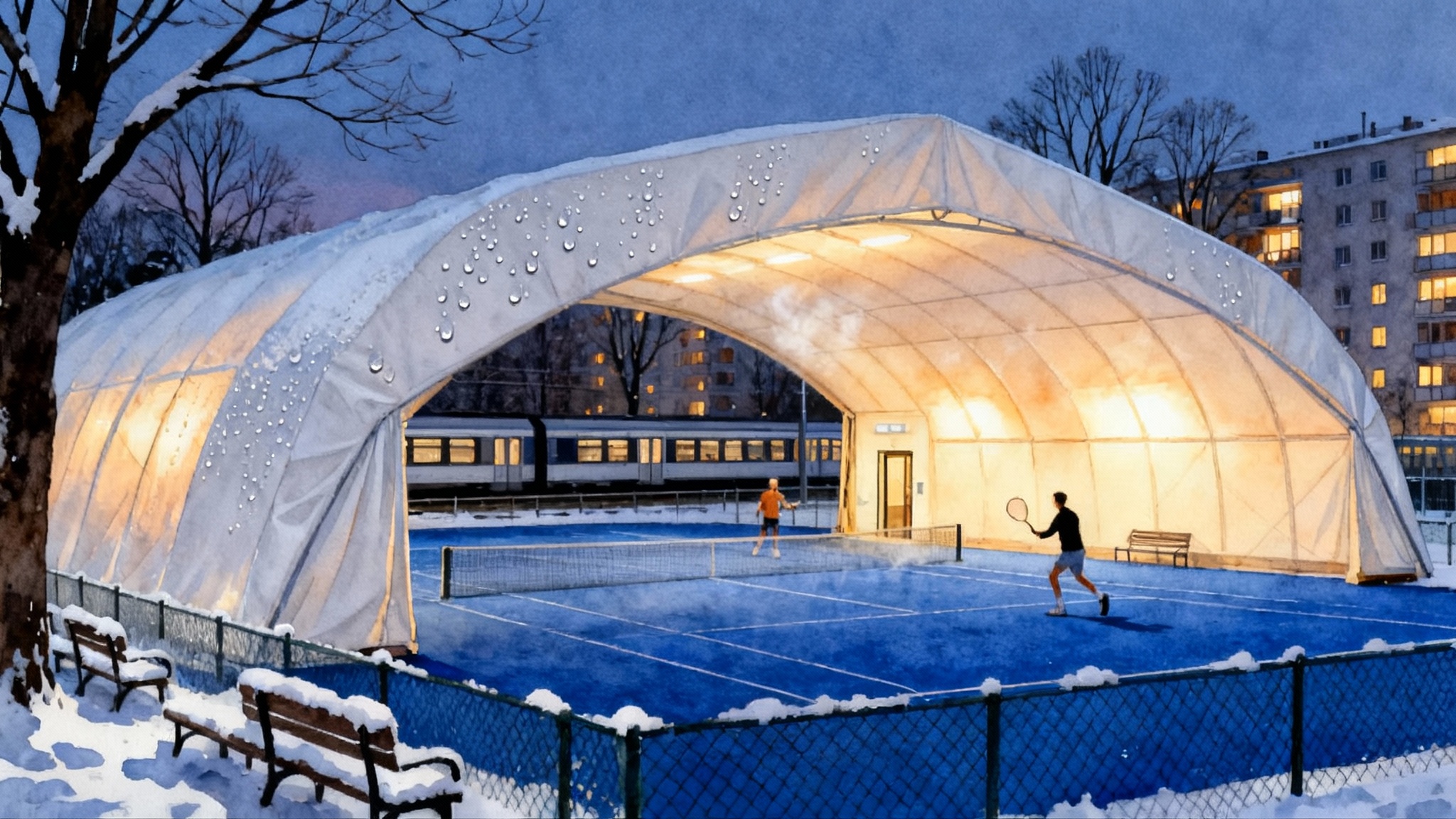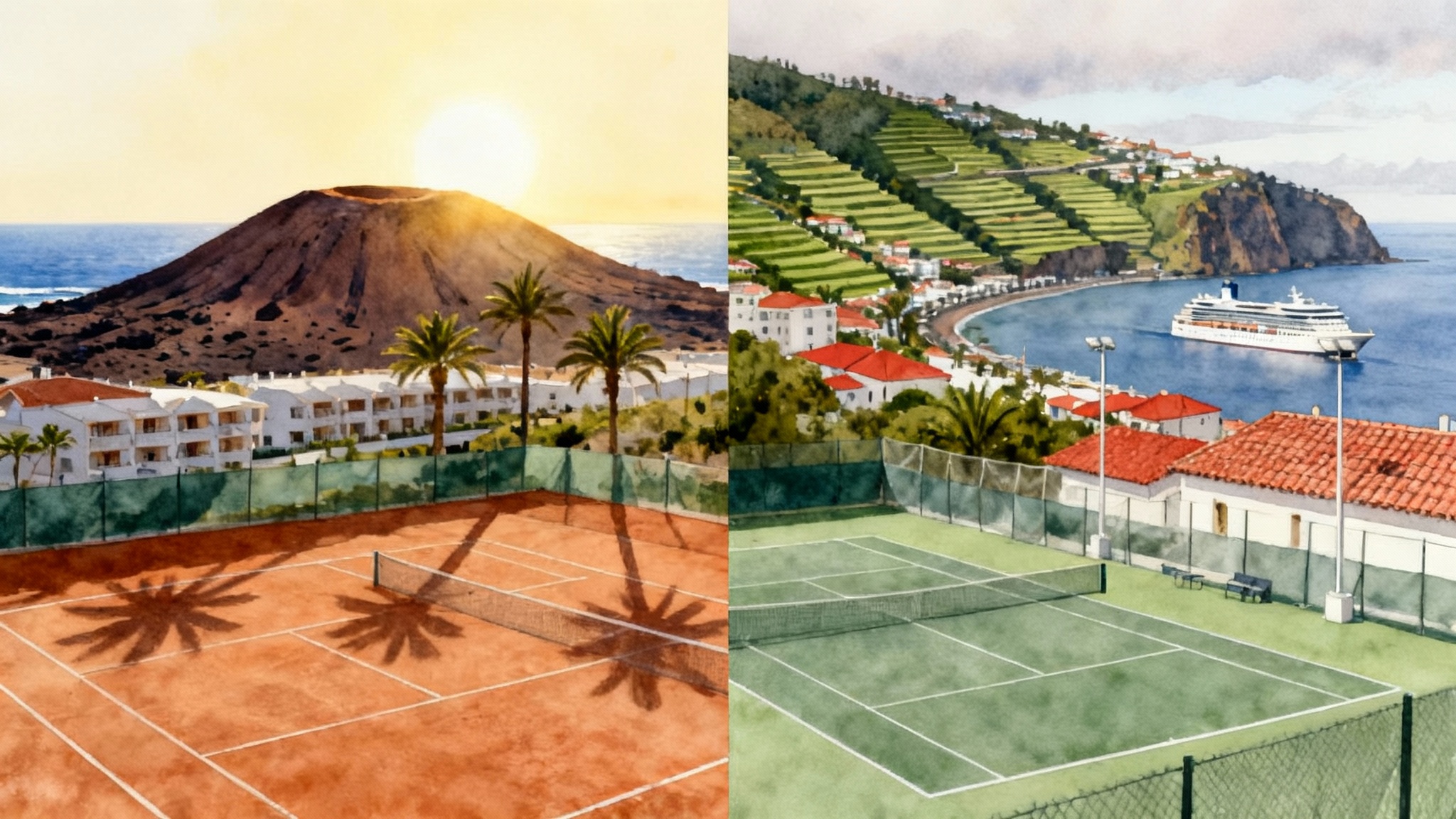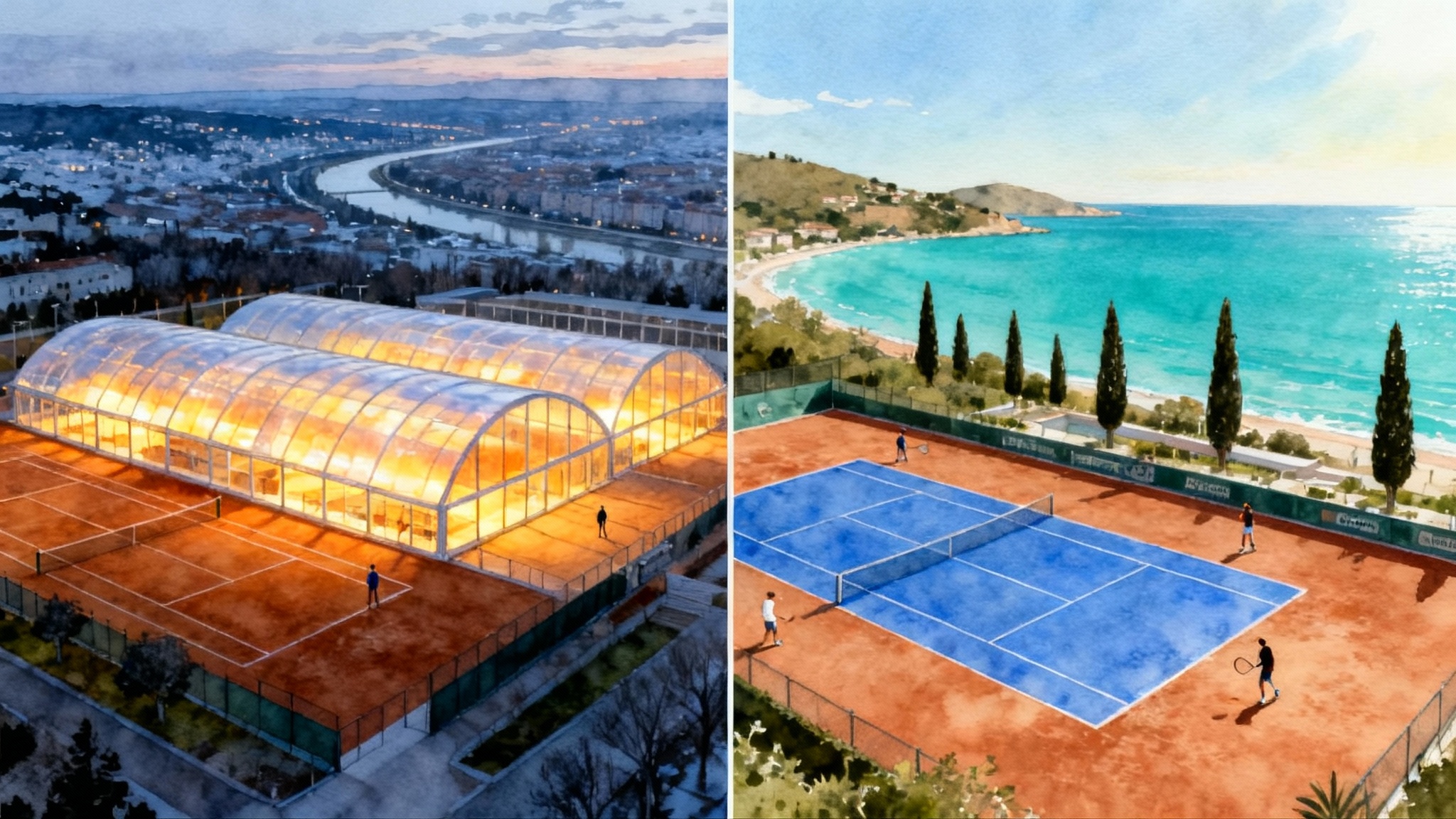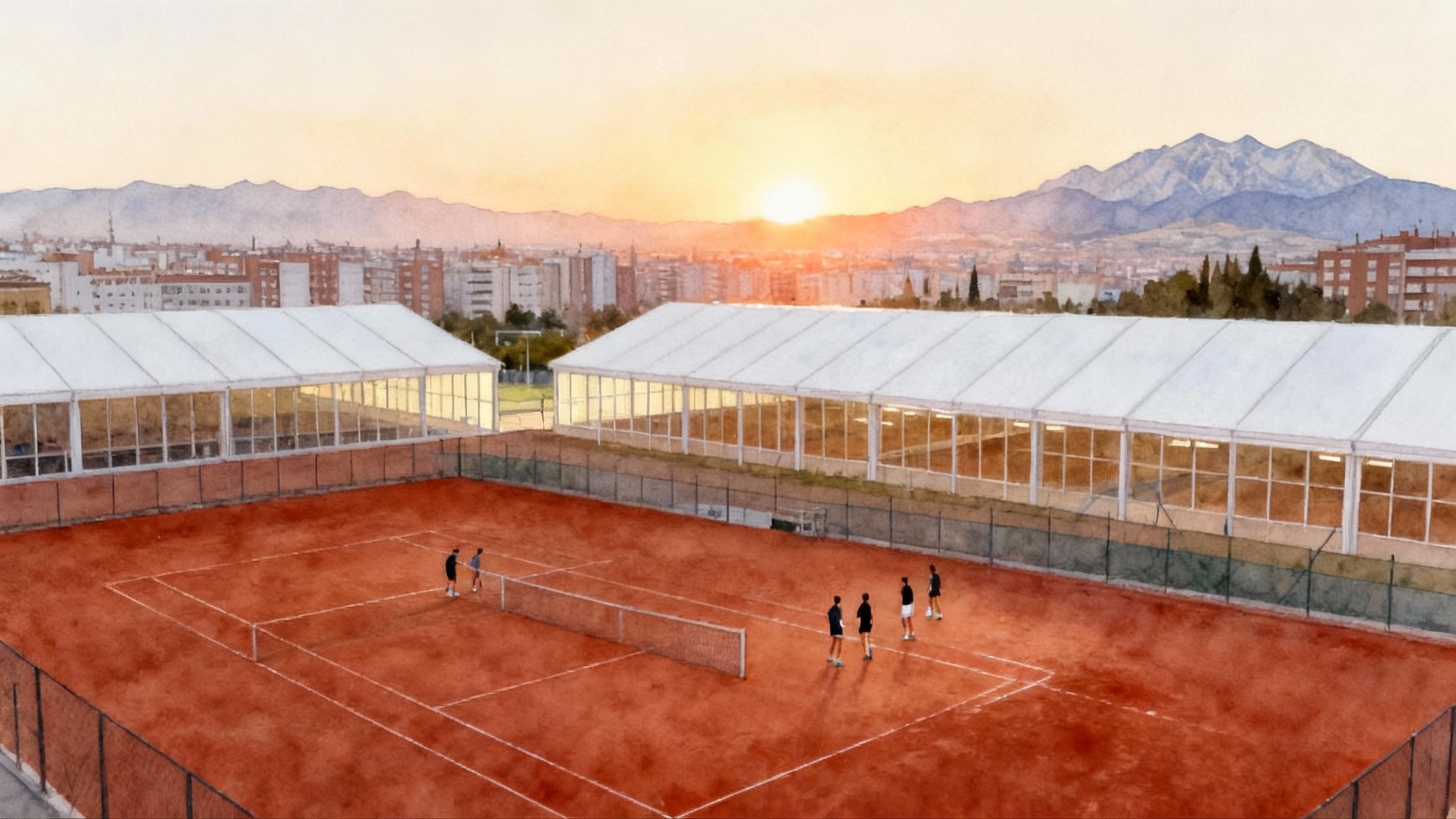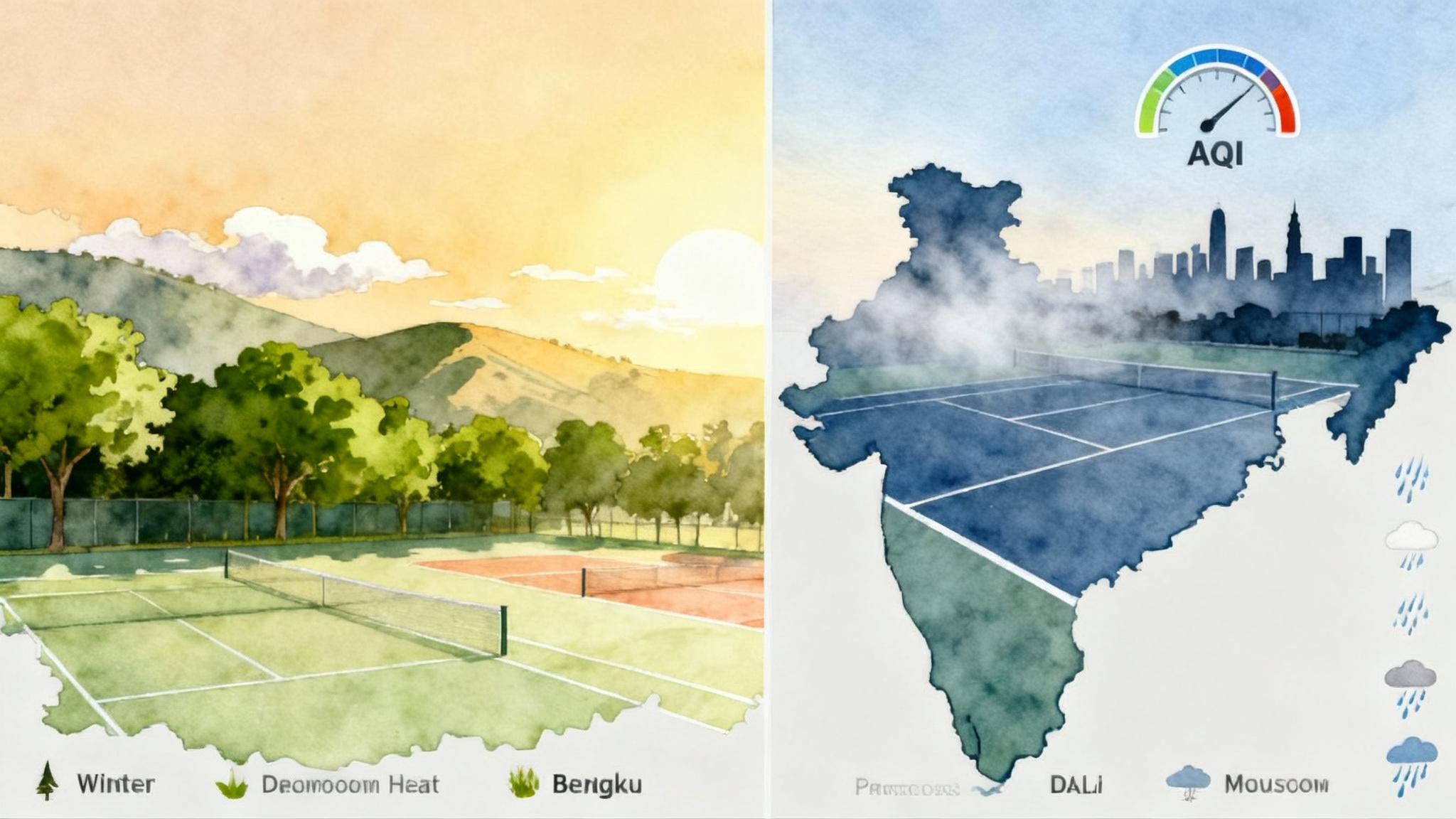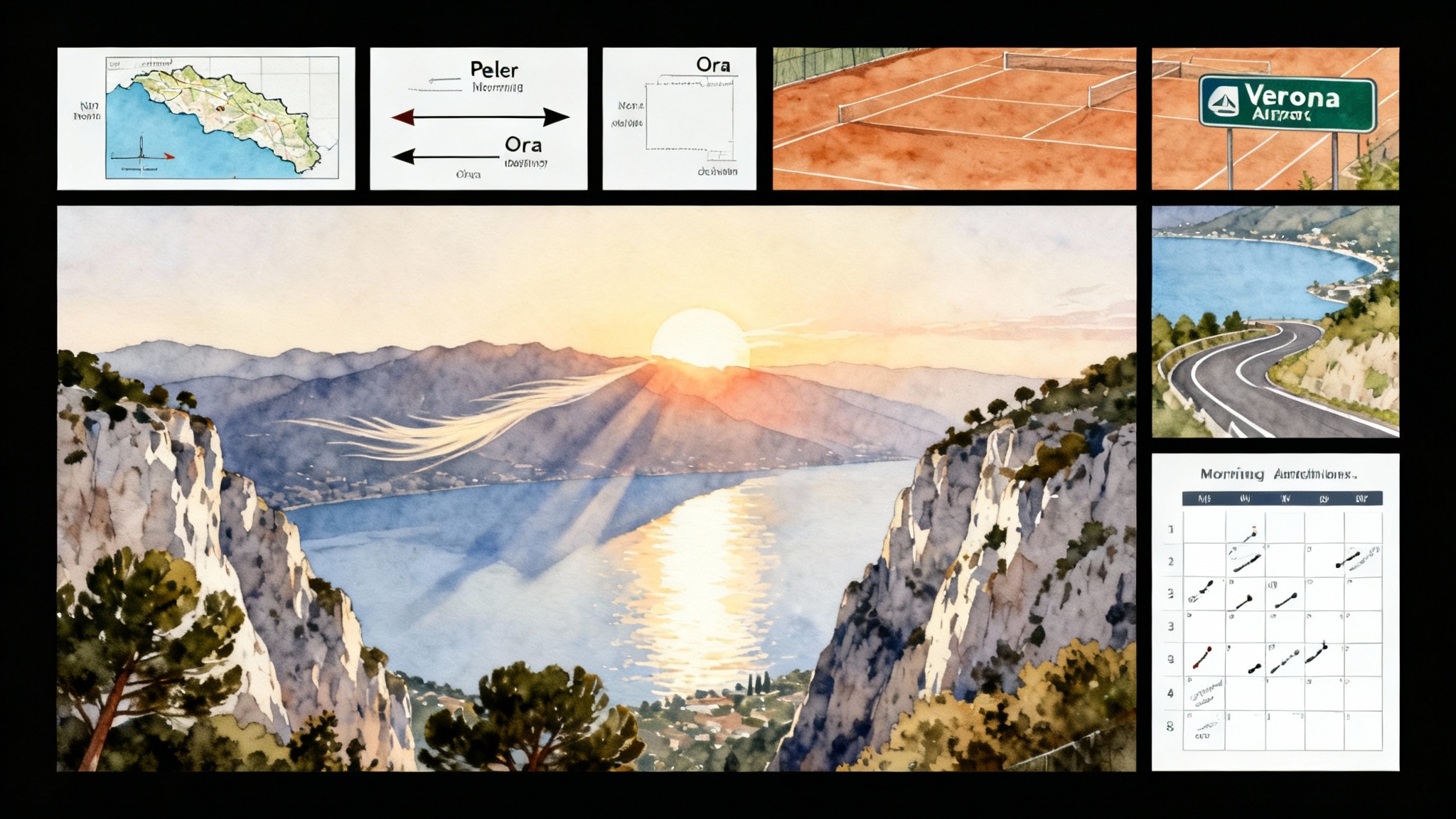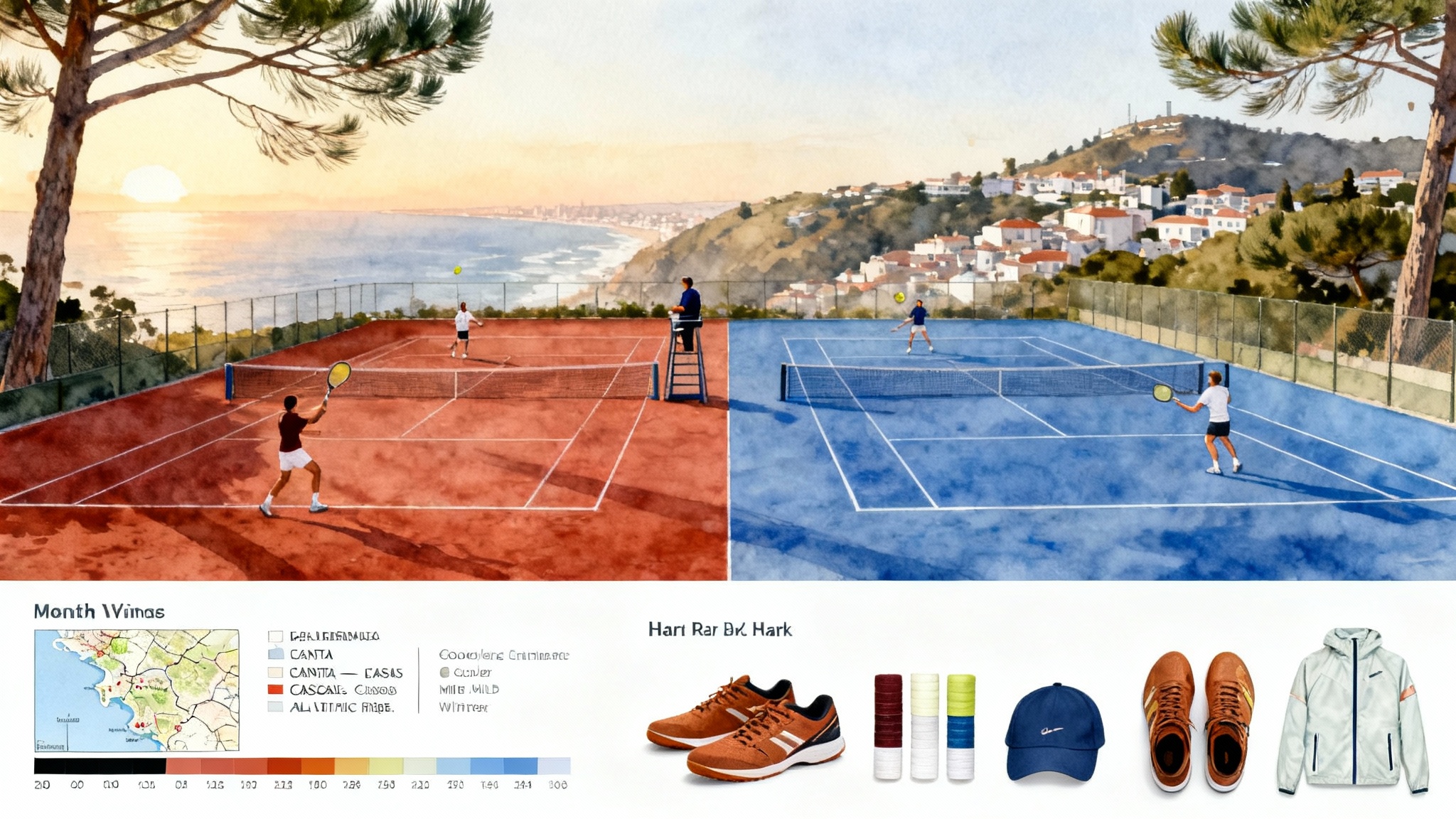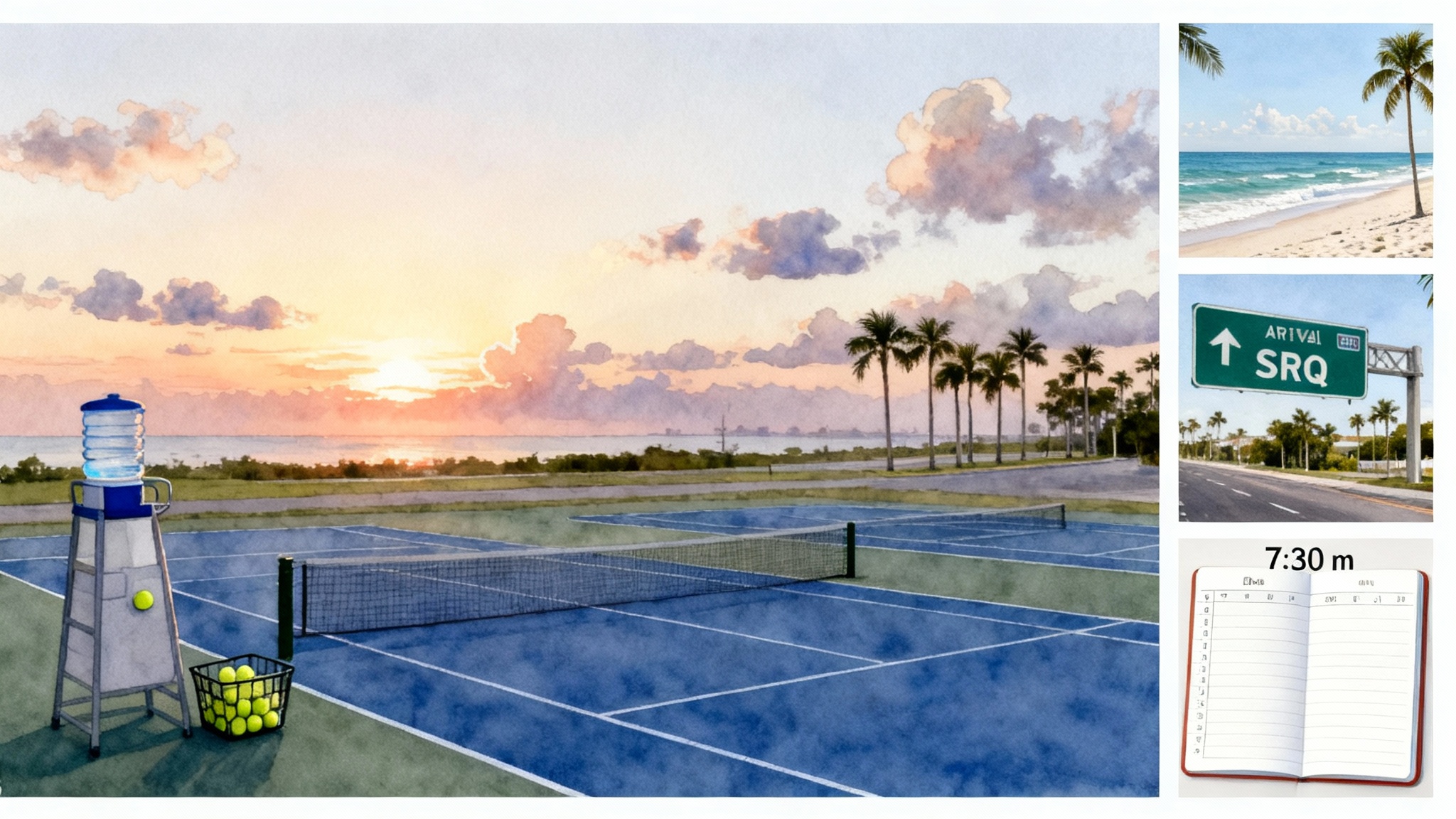Gulf Winter Tennis 2025–26: Rafa Nadal Academy Kuwait Guide
Training in the Gulf from November to April can be brilliant if you plan for heat, humidity, and dust. Here is why the Rafa Nadal Academy Kuwait is the most reliable warm‑weather base, plus sample weeks, costs, and travel tips.
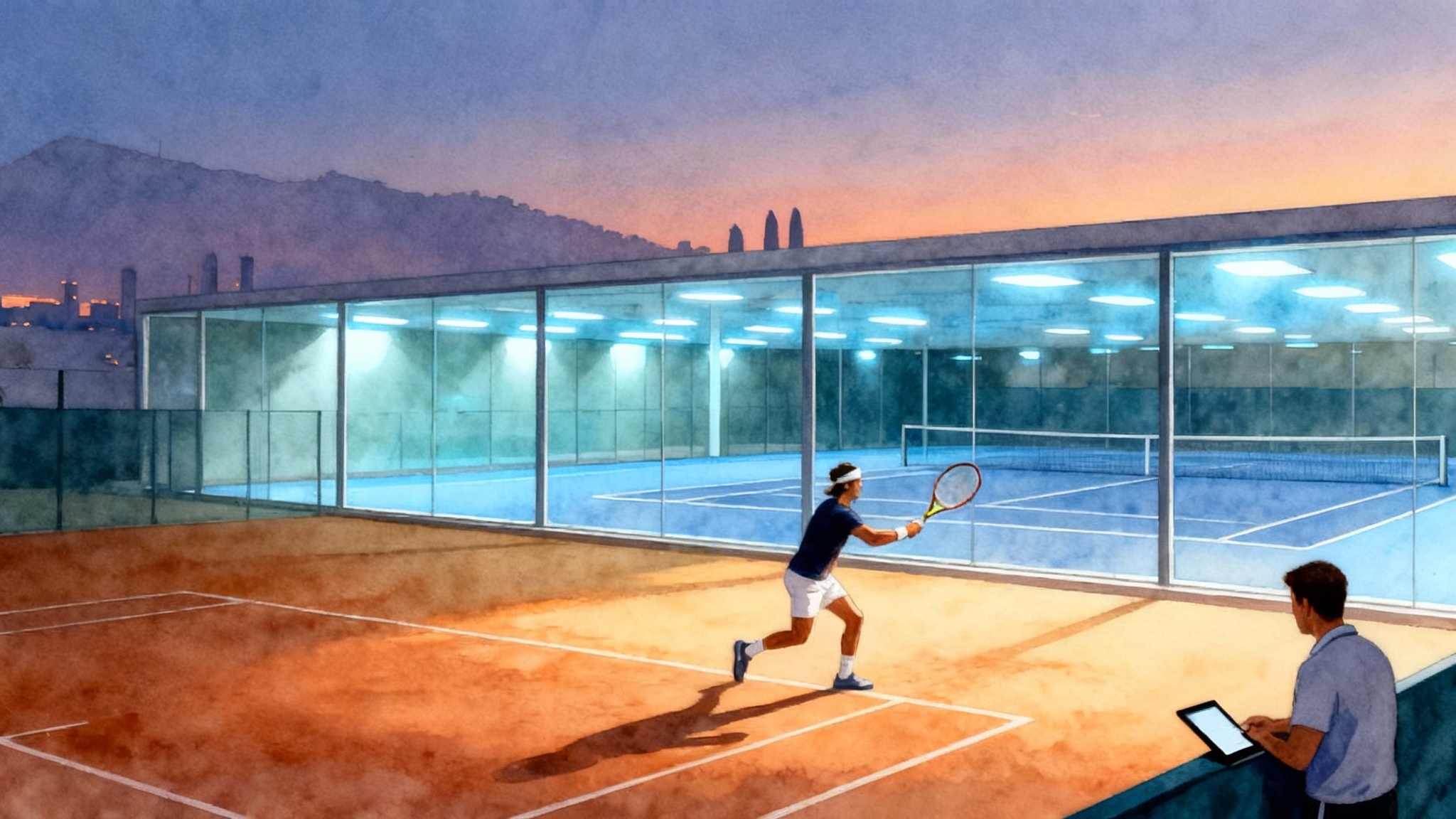
Why the Gulf is a powerful winter block for players
From November through April, the Gulf offers a rare combination for tennis: long dry spells, abundant sunshine, and international‑standard facilities that run like clockwork. You can stack quality sessions without losing rhythm to snow, rain, or short daylight. The trick is choosing a base that keeps you on court when the weather turns variable, especially on days with heat spikes or dust in the air.
That is where the Rafa Nadal Academy Kuwait profile stands out. It brings the control of a European performance center to a region that can swing from perfect blue skies to dusty headwinds in a few hours. With climate‑tuned courts, professional‑grade conditioning spaces, and programming modeled on the methods used in Manacor, it has become the most reliable Gulf hub for consistent winter training. You get the upside of warm weather and the safety net of a seamless indoor option in the same complex. To anchor the claims in this guide, start with the official facility description.
Reliability matters more than raw sunshine
If you are building toward a spring season or a college lineup, you need predictability more than postcard weather. Two lost days to dust or an unplanned heat spike can unravel a carefully periodized month. A reliable base must solve three problems at once:
- Heat management: Can you shift to shaded or indoor courts without changing the day’s objectives?
- Air quality management: If dust or wind picks up, can you move inside at the same pace and still hit the volume target?
- Session continuity: Can you keep coaching, sparring, and recovery services aligned when the venue changes?
Kuwait’s Nadal complex is purpose built for these scenarios. You can start outdoors at 8:00 a.m., feel the breeze turn gritty by late morning, and be rallying under the same coach on the indoor surface before your hydration bottle runs dry. The surfaces are matched closely enough that the session intent carries across. That is the difference between a pretty facility and a high‑performance base.
Kuwait vs Doha vs Dubai in winter
Doha and Dubai are proven tennis cities with excellent tournament pedigrees and a deep coaching market. In peak winter they often deliver superb outdoor conditions. Yet a training block is judged by the worst five days, not the best twenty.
- Doha: Mild temperatures and quality public and private courts. Wind can build across open sites, and while some clubs have covered courts, the fully integrated indoor‑outdoor switch is not universal. If you are staying far from your club, a mid‑day move can burn an hour. For a science‑led alternative in the city, see the Aspire Academy performance ecosystem.
- Dubai: Huge club ecosystem, including academies that run strong junior and adult programs. Traffic and spread between facilities can make an indoor pivot slower. In many clubs, indoor courts are limited or off‑site, which forces compromises on sparring partners or coaching continuity.
- Kuwait: The Rafa Nadal complex concentrates indoor and outdoor courts, gym, and recovery in one place. When conditions wobble, your plan does not. You preserve drills, hitting partners, and feedback loops.
The net result is not that Kuwait is always better weather. It is that Kuwait, through this specific complex, keeps your plan intact more often.
What the complex solves in practical terms
Think of a training day as a logistics puzzle. You need courts, a coach, a sparring partner, a gym window, and recovery time in a fixed sequence. Disruptions multiply when any piece is off‑site. The Kuwait setup compresses the puzzle into one campus so your coach can rebook a court, the physio can shift a screening, and the strength session still lands on the same timetable.
Here is how that looks:
- Morning technical block outdoors, shaded stands nearby for coaching review.
- Late morning dust alert, immediate switch to indoor courts with similar bounce and speed.
- Post‑hit mobility in the on‑site gym so lactate clearing is not delayed.
- Video review in a meeting room while the wind settles.
- Afternoon tactical set pieces back outdoors, or indoors again if the air quality stays poor.
You end the day with the same total minutes on court and in the gym, and that is what moves the needle.
A climate‑smart calendar from November to April
- November: Transition month. Mornings and evenings are superb. Midday can still feel hot on day one if you fly in from a cold climate, so use a reduced load for the first forty‑eight hours and prioritize hydration checks.
- December to February: Prime window. Consistently comfortable for outdoor sessions, with occasional breezy or dusty days. The indoor option protects high‑intensity work such as serve targets and return drills that need stable ball flight.
- March to mid‑April: Warming trend. Shift your heavy work early and late, with indoor court bookings held as insurance from noon to 3:00 p.m. For other weather‑secure ideas in this period, see Malta weather‑safe winter training.
Two sample 7‑day training blocks
Here are templates you can adapt. They assume an intermediate to advanced player chasing match durability and a cleaner contact point under pressure.
Block A: Technical rebuild and aerobic base
-
Day 1, Arrival reset
- Morning: Light movement screen, dynamic mobility, 30 minutes easy rallying to calibrate bounce and footwork.
- Afternoon: Video‑led forehand and backhand checkpoints, low‑intensity live ball, 20 minutes of serves.
- Recovery: Pool walking, ten minutes of diaphragmatic breathing before dinner.
-
Day 2
- Morning: Patterned drills for depth discipline, targets set with cones. Finish with short cross‑court exchanges.
- Gym: Aerobic base circuit on bike or rower, plus trunk stability.
- Afternoon: Serve plus one patterns, return block with feed‑serve‑return rhythm.
-
Day 3
- Morning: Approach and first volley mechanics, both wings. Add transition footwork lanes.
- Afternoon: Situational points starting at 30 all, no‑ad play to add stress without overloading volume.
- Recovery: Soft tissue work and eight hours of sleep minimum.
-
Day 4, Controlled load
- Morning: Live ball to big targets, forehand inside‑out patterns.
- Gym: Strength session with trap bar deadlift, split squats, pull variations, and shoulder external rotation.
- Afternoon: Serve accuracy test, 40 first serves, 40 second serves with charting.
-
Day 5
- Morning: Footwork ladders, then depth cages. Add seven‑ball patterns that force recovery steps.
- Afternoon: Doubles return group for variety and reaction speed. If dust rises, take it indoors and keep the same set counts.
-
Day 6
- Match day: Two sets with a local sparring partner. Chart first‑serve percentage, return depth, unforced errors by zone.
- Recovery: Contrast shower or cold plunge if available, mobility before bed.
-
Day 7, Deload and explore
- Morning: Easy hit, 45 minutes max, lots of slice and touch.
- Afternoon: Family time or light tourism. Early night.
Block B: Pre‑competition sharpening
-
Day 1
- Morning: High‑speed timing drills, on‑the‑rise rally to take time away.
- Gym: Power focus with medicine ball throws and jumps, low volume.
- Afternoon: Serve plus two patterns and return aggression off second serve.
-
Day 2
- Morning: Six‑ball offense, then defense‑to‑neutral sequences.
- Afternoon: Short‑set match play to four games, no lets, play two tie‑breakers.
-
Day 3
- Morning: Targeted backhand under pressure, body serves, and backhand returns.
- Recovery: Mobility and film review.
-
Day 4
- Morning: Points starting with a deep cross‑court feed, rule that winner must finish at net.
- Afternoon: Match play with coaching on changeovers.
-
Day 5, Load management
- Morning: Indoors for precision serving if wind or dust is up. Chart locations and kick height.
- Afternoon: Doubles formations for serve and volley confidence.
-
Day 6
- Morning: Full match with normal scoring. Practice changeover routines and composure cues.
- Recovery: Nap or guided breathwork to lock in readiness.
-
Day 7, Taper
- Morning: Thirty minutes of rhythm hitting, twenty minutes of serves, ten minutes of returns.
- Afternoon: Pack, easy walk, early dinner.
Family‑friendly factors that reduce friction
A winter block succeeds when partners and children enjoy the week too. The Kuwait academy sits within easy reach of shopping and dining clusters, pools for light play, and child‑friendly areas. The on‑site setup usually includes a café or restaurant, viewing areas where family can watch sessions, and safe walkways so everyone navigates the day without rideshare juggling.
Nearby attractions tend to be indoors or climate controlled, which helps during midday heat. Plan family time in the afternoon window between gym and second hit, or place the second hit indoors and invite family to watch from the stands. When the whole day flows in one place, everyone relaxes and the player recovers better. For another efficient winter destination, compare Sarasota Florida tennis planning.
Costs: what to budget for a one‑week block
Exact prices vary by season and package. Use the ranges below to frame your budget before you request quotes.
- Private coaching: Expect premium European academy pricing for a one‑to‑one hour with a licensed coach. Bundles of multiple sessions may bring the per‑hour cost down.
- Small group drills: More affordable than private hours and a useful way to get high ball volume. Ask for level‑matched groups.
- Court time only: If you travel with your own coach, budget for court rental blocks both indoor and outdoor. Indoor slots may cost more at peak times.
- Strength and conditioning: Many players add two gym sessions in the week with a performance coach. Ask whether this includes testing such as jump profiling and movement screens.
- Recovery services: Options usually include sports massage and sometimes physiotherapy or cryotherapy. Book early for match days.
- Accommodation: Decide between a hotel near the academy or a serviced apartment for a family stay. Proximity is worth paying for because it preserves your nap, meal timing, and indoor fallback.
- Food: On‑site cafés simplify timing. If you prefer kitchens, pick an apartment and pre‑stock breakfast and recovery snacks.
- Transport: If you stay within a short drive, rideshare costs stay modest. Some packages include transfers or shuttles, which help on double‑session days.
Before you book, request an itemized quote with separate lines for indoor and outdoor court time, coaching hours, gym access, and recovery. That transparency lets you compare with Doha or Dubai offerings on an apples‑to‑apples basis.
Travel and visa logistics for a smooth arrival
- Documents: Ensure your passport has at least six months of validity beyond your travel dates. Carry proof of accommodation and a return or onward ticket.
- Visa eligibility: Many nationalities can obtain an electronic visa or a visa on arrival subject to current rules. Confirm your eligibility with an official government source before booking flights.
- Flights: Kuwait International Airport has direct and one‑stop links from Europe, Asia, and key Middle Eastern hubs. From the airport, plan thirty to forty‑five minutes to the academy area depending on traffic.
- Health: The climate is dry. Hydrate on the flight, pack electrolyte tabs, and begin your salt strategy on day one. If you are dust sensitive, bring a lightweight mask and any prescribed inhalers and carry them in a court bag.
- Insurance: Check that your travel insurance covers organized sport and gym use.
How to schedule around heat and dust
- Book morning and evening courts first. Pencil indoor courts from noon to mid‑afternoon as a contingency. You can release them if the day stays clear.
- Always pair a heavy technical session with a lighter gym session, or vice versa. Avoid stacking two maximal stressors on a day with higher heat or wind.
- Serve practice is the first to suffer in wind. If flags start to lift, move serve accuracy work indoors so you do not engrain bad timing.
- Dust days are good video days. Shift to the indoor hall for controlled hitting and then spend thirty minutes doing clean frame‑by‑frame analysis.
- Carry a simple on‑court checklist: two big bottles, electrolyte tabs, a clean towel in a zip bag, eyedrops if recommended, and spare overgrips. In dry heat, overgrips glaze faster than at home.
Brief comparisons: When Doha or Dubai still make sense
You may still choose Doha or Dubai in three cases:
- You have an existing coaching relationship at a specific club and you need that person.
- Your family trip is centered on a particular attraction or event and tennis is secondary.
- You have tournament entries nearby and want to minimize travel between match days.
For pure training efficiency however, the Kuwait indoor‑outdoor integration keeps your plan intact with fewer compromises. Fewer compromises mean more completed sessions and a cleaner arc from day one to day seven.
A simple booking playbook
- Pick your window and define your goal in one sentence. Example: improve second‑serve resilience under pressure.
- Contact the academy with a clear brief: hours of private coaching, desired group drills, indoor insurance slots, gym sessions, and recovery.
- Ask for the coach assignment in advance and share three recent match clips. The more context, the better the plan.
- Reserve accommodation within a short drive. Proximity protects sleep and on‑time meals.
- Build your two sample weeks in a calendar and keep them flexible. Mark the two highest‑value sessions each day and protect those no matter what.
- Use a simple notes template after each session: one technical point, one tactical point, one physical cue, one mental cue. That drives compounding gains.
- For a quick start, send your brief via the Rafa Nadal Academy Kuwait profile so the staff can match coach availability to your goals.
Key takeaways
- Reliability beats average weather. A complex that makes indoor and outdoor switches instant will save two to three sessions a week compared with scattered facilities.
- Kuwait’s Rafa Nadal site is designed for continuity. That continuity is what grows skills without setbacks.
- Plan your day around the climate. Early and late outdoor slots are gold, indoor insurance at midday keeps precision work on track.
- Book transparently. Ask for line items and protect your highest‑value sessions each day.
- Keep family logistics simple. One campus and short commutes reduce stress and improve recovery.
The bottom line
A winter in the Gulf can be transformative. If you choose a base that treats weather variation as a detail rather than a derailment, you will finish your week with the exact number of quality touches you planned. The Rafa Nadal Academy Kuwait gives you that insurance. It is not about chasing perfect skies. It is about locking in a training flow that survives whatever the day brings and sends you home sharper, fitter, and more confident when spring competition arrives.
